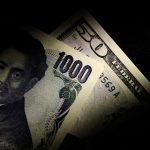SINGAPORE/LONDON (Reuters) -The dollar was supported by rising U.S. yields on Tuesday, with the pressure being felt by low-yielding currencies such as China’s yuan and Japan’s yen, which was pinned to its lowest since 1986.
Benchmark 10-year Treasury yields rose nearly 14 basis points to 4.479% overnight, with analysts linking the rise to expectations that Donald Trump will win the U.S. presidency, in turn leading to higher tariffs and government borrowing.
On Tuesday, the yield on the 10-year note was down 2 basis points on the day at 4.4554%, around its highest since the start of the month.
As the dollar rose, the euro handed back part of a small rally as the first round of France’s election turned out more or less in line with polling. The single currency was last 0.2% lower at $1.07188.
“Trump’s better (debate) showing over (President Joe) Biden added to expectations that inflation may pick up pace, yield curves will steepen further and that the dollar may continue to trade at a premium,” said OCBC currency strategist Christopher Wong.
The yen sank to 161.745 per dollar on Tuesday, its weakest in nearly 38 years, extending a downward slide driven mainly by a wide gap in interest rates between the U.S. and Japan.
Japan’s finance minister said on Tuesday authorities were vigilant to sharp currency market moves, but stopped short of giving a clear intervention warning.
The yen was also sinking on crosses as yen bears were wary that the dollar/yen pair was at risk of intervention by Japanese authorities.
Against the euro, the yen touched a lifetime low of 173.67 on Monday and was just shy of that level on Tuesday, while against the Australian dollar, the yen was near its lowest in 33 years as carry trade remained attractive.
“There is no trigger as such for yen weakness today, rather there is nothing really preventing it,” said Matt Simpson, senior market analyst at City Index.
“The BOJ have continued to underwhelm in recent meetings, and that is seeing the yen simply drift to new lows unchallenged. It is now lower for the 11th session out of the past 14, and could continue to drift lower unless incoming U.S. data surprise to the downside,” he said, referring to Friday’s U.S. nonfarm payrolls numbers.
Robust manufacturing data in China and an announcement from the central bank that it would be borrowing bonds – likely to sell them and steady falling yields, traders said – gave only the briefest fillip to the yuan on Monday.
It was last at 7.3065 in offshore trade on Tuesday, within sight its June low. Its onshore counterpart, was 0.04% lower at 7.2712 to the dollar. [CNY/]
The dollar index, which measures the U.S. unit against six others, was up 0.1% at 105.94, with the spotlight on jobs opening data due later in the day and comments from Federal Reserve Chair Jerome Powell when he takes the stage at the ECB forum in Portugal.
Sterling, meanwhile, was down 0.15% at $1.2632, around its weakest since mid-May.
The Australian dollar eased 0.14% to $0.66515 with traders weighing central bank minutes, which showed much discussion about whether policy was tight enough to ensure inflation would slow as desired. [AUD/]

Swaps markets pricing implies a one-in-three chance of a rate hike as soon as next month.
“We know they were talked about, the question is, what is the trigger,” said ING economist Rob Carnell. “We are leaning towards forecasting a hike at the August meeting.”
To read the full article, Click Here

